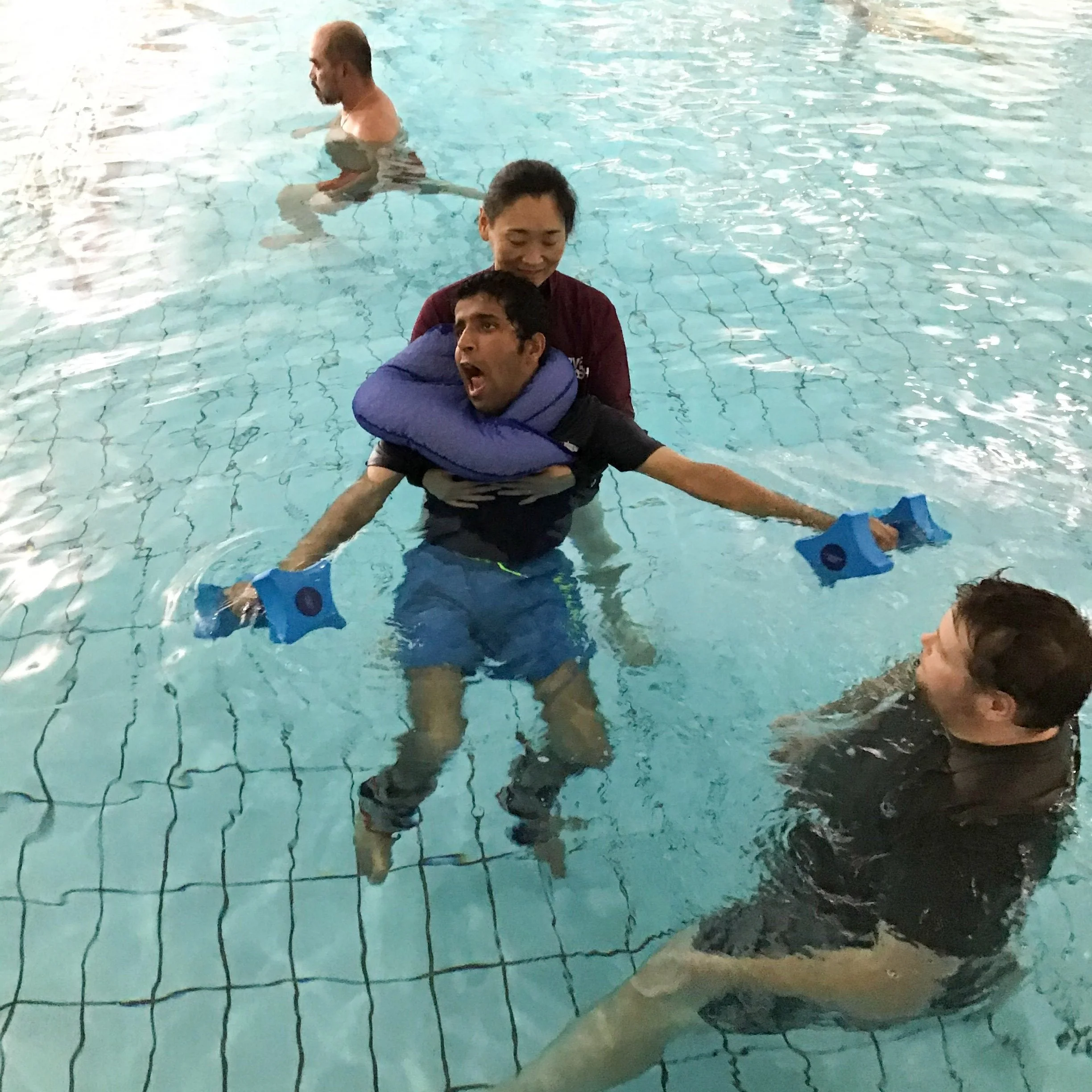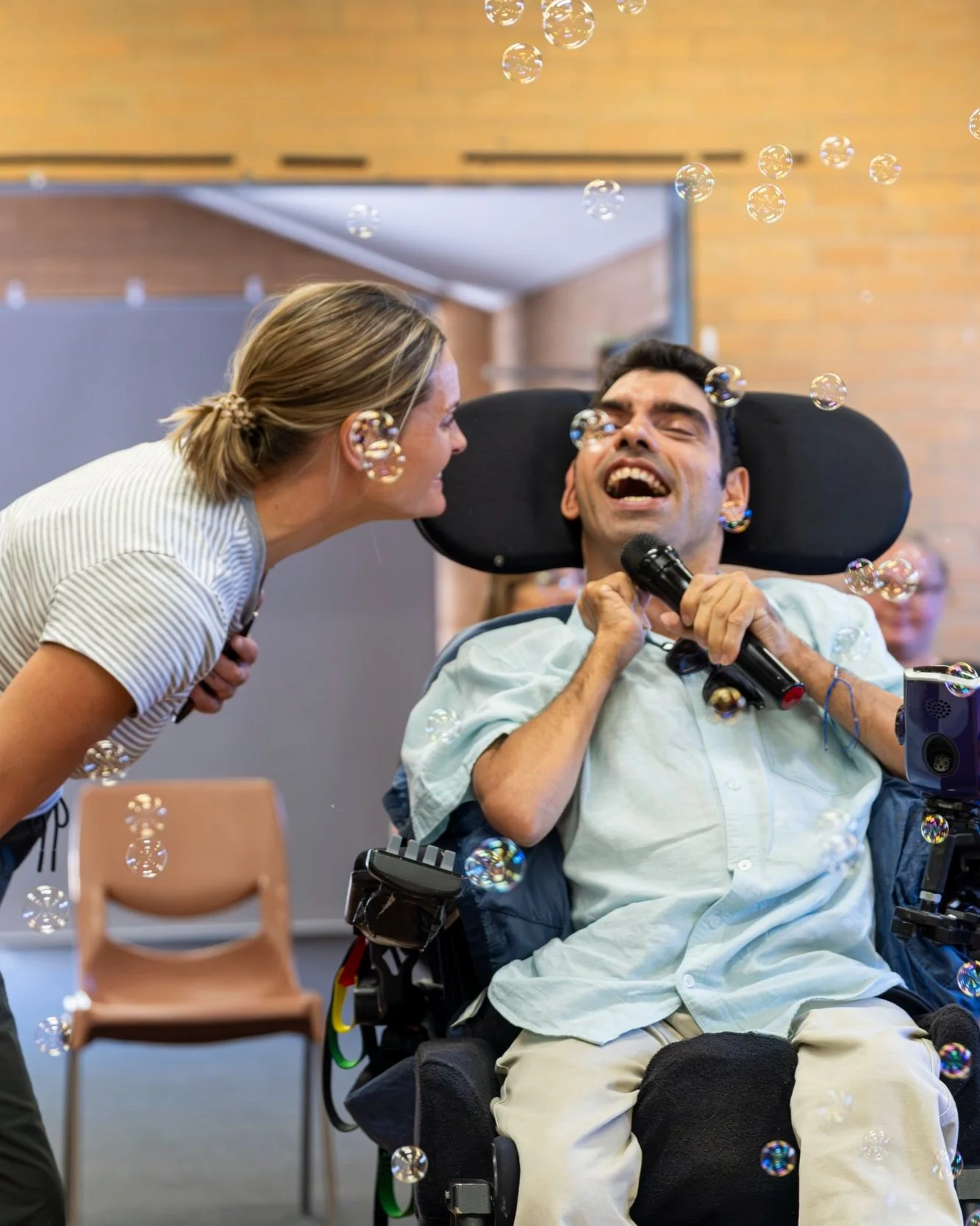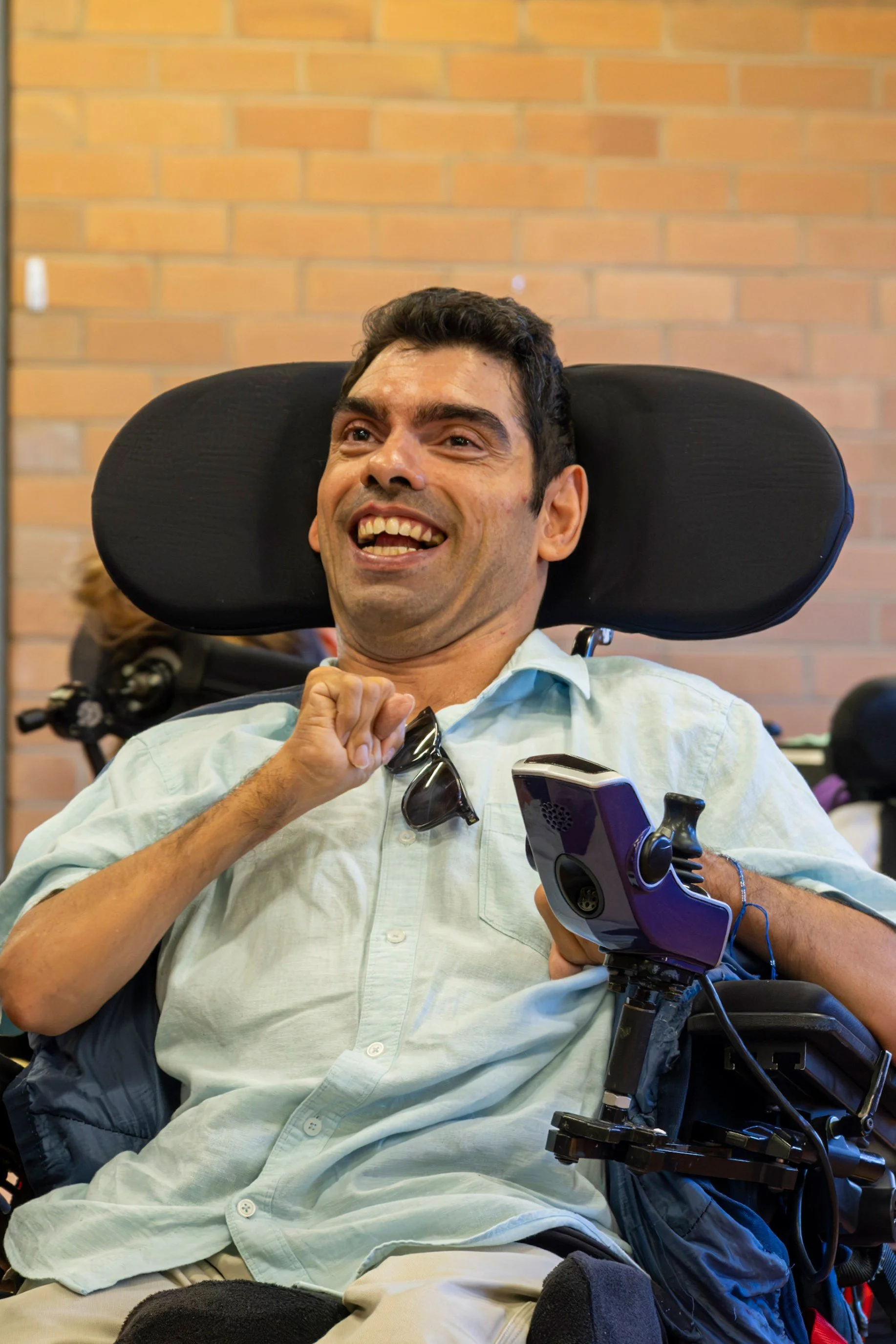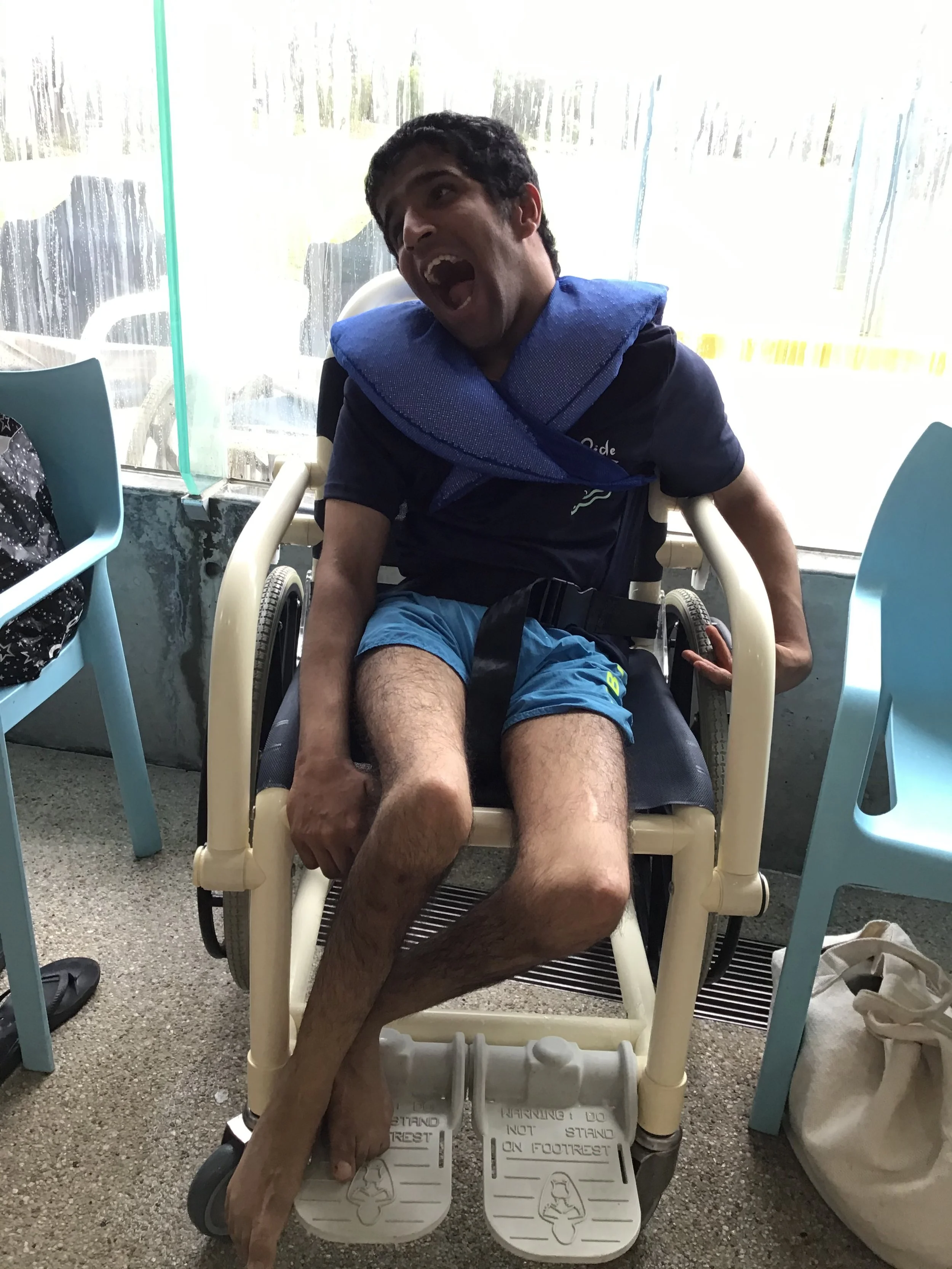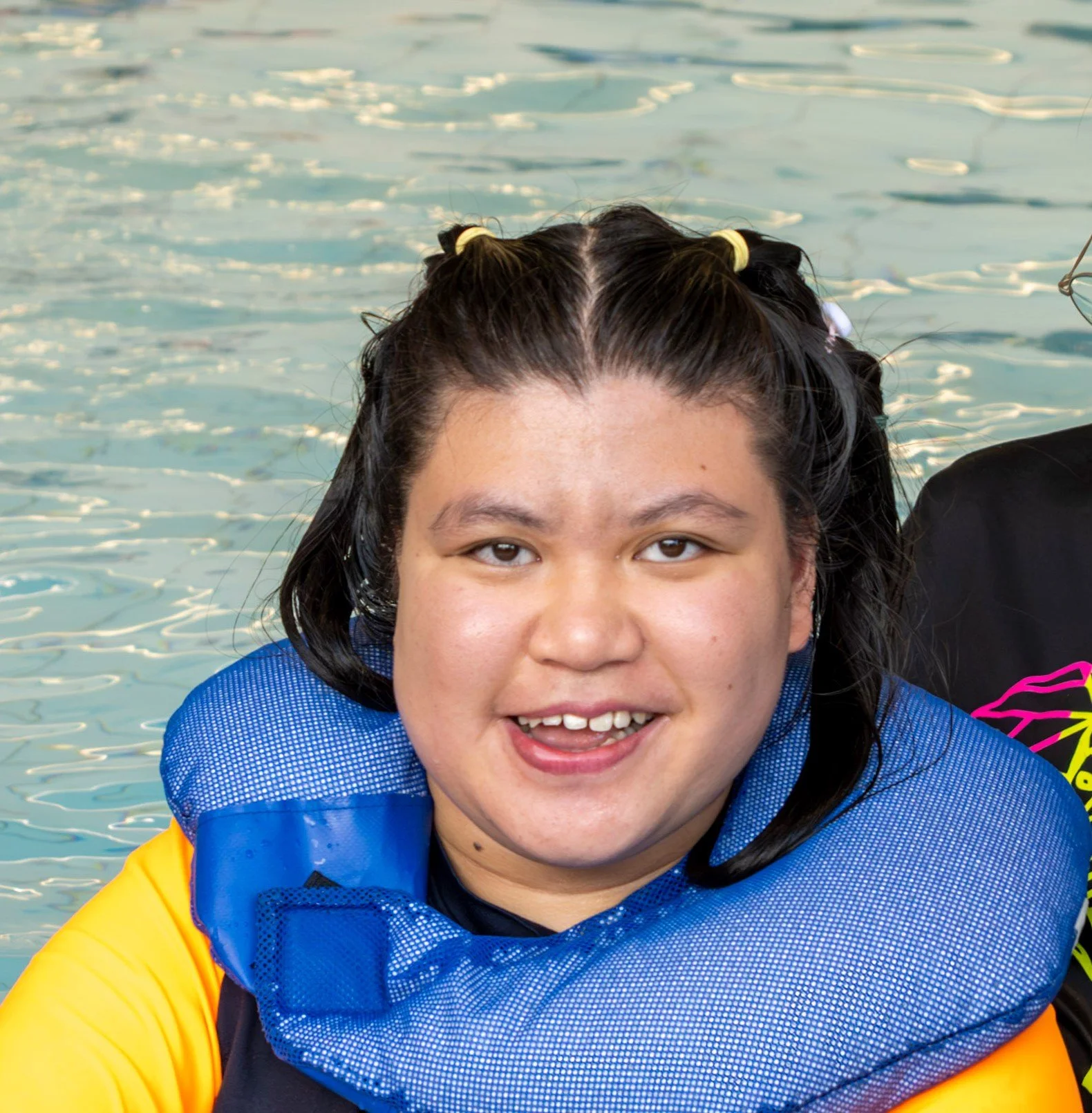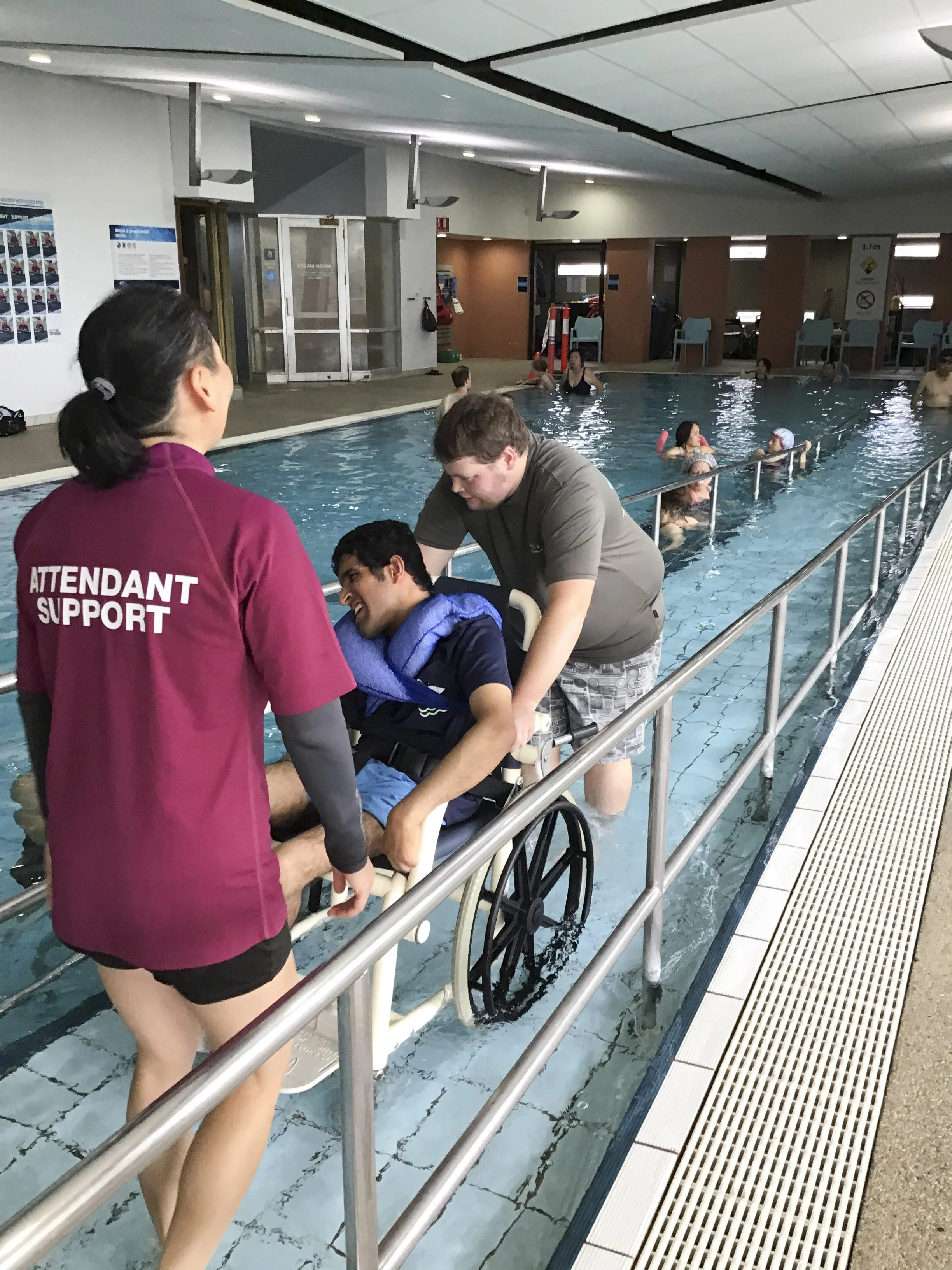
Being active with high support needs
All content on this site has been developed alongside adults who use wheelchairs. But we know that adults with cerebral palsy and high support needs often have to work extra hard to find and start physical activity.
We met with a group of young adults with cerebral palsy who took us along to their physical activities and showed us how they got active, and what tips they have for others.
What are ‘high support needs’?
High support needs usually means someone needs support from at least one or two people for most of their activities.
Support might be needed for a range of reasons like supporting communication, physical assistance and getting around, learning and understanding, or for medical concerns.
The team felt that having choice and control wherever possible was important.
Things like choosing:
The type of activity
Which exercises to do on a given day
Who supports you
When you start and stop
Meet the Team
The best thing about being active as an adult is….
“Choice. I enjoy it better.”
“To be independent and the capacity to make my own decision.”
“It’s fun!”
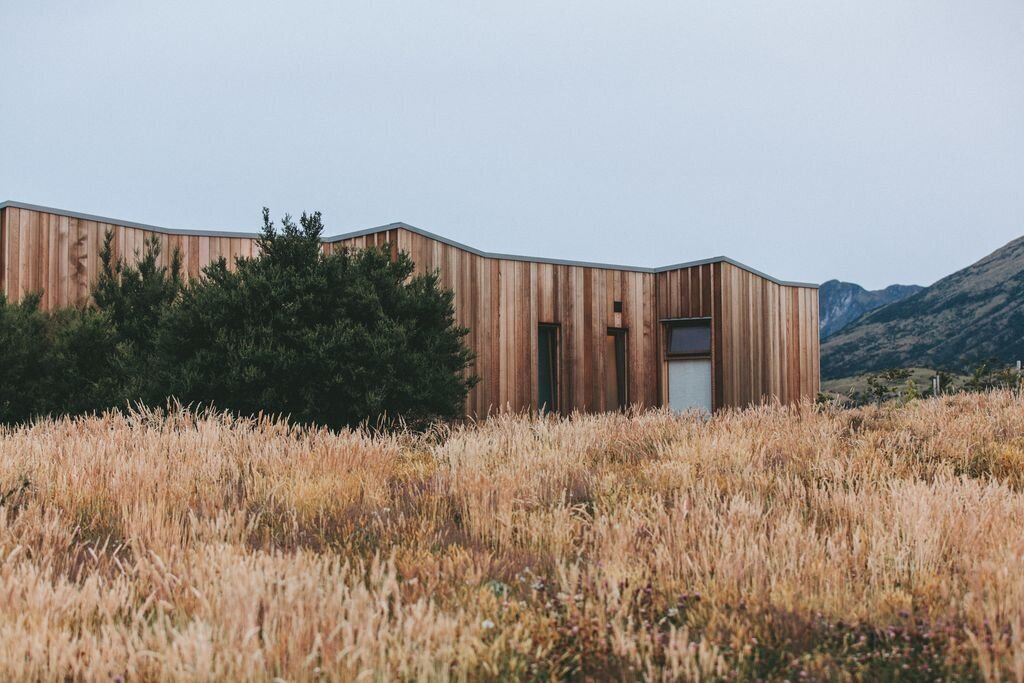
The ‘why’
“Sleep better, feel stronger, eat better.”
“I find the swim in the hydro-pool to be very relaxing after the exercises.”
“I feel good in my body.”
“At the gym, people will come over to have a chat with me. I like the socialisation at the gym.”
“To see friends.”
“She became more social. At home she only sees the family and support workers, that's it. But in the pool, she's happy. She's happy about the movements of the people and especially when they say hi to her.”

The right place
Like most adults with cerebral palsy, word of mouth was the most common way to find out about opportunities that could cater to high support needs.
For our team, it was physiotherapists, friends and local newsletters that were most helpful in finding opportunities.
“I often learn about opportunities through family, support teams and education institutions.”
- Yatish
“We knew other people with similar needs who went there, so we knew it should be okay for Michael.”
- Michael’s Mother
Once a potential venue was found, most adults with high support needs took a few trips to work out if it was right for them.
This included if the venue was physically accessible, and also socially inclusive.
Some of the ways they checked out the ‘place’ were:
Sending a family member or therapist who knew their needs might go to look at the venue.
Go to the place with their family to get a tour and check the exercise space, change rooms, and equipment available.
Many adults with high support needs preferred to go a few more times before starting, to get used to the space and meet the staff, and see if they felt comfortable in the environment.
For the gym, Lisa wanted to know that the equipment could be adapted to her needs.
Yatish was looking for a venue with a hoist or water wheelchair to get into the pool.
His physio recommended a neck float for safety in the pool.

The right people
Types of support
Most people with high support needs require an extra support person for physical activity.
For adults with high support needs, the tasks required of support workers might be to do with accessing the activity or supporting the exercise.
Accessing the activity:
Supporting communication
Transfers or moving around the space
Setting up equipment
Personal care
Supporting the exercise:
Moving limbs
Providing motivation and encouragement
Keeping track of the program
Checking on safety
Sometimes, people knew exactly the types of support needed for their activity when looking for support workers.
A lot of the time, it took trial and error to work it out over time.
“When Angelica sees these support workers she knows that they're the ones who do those activities with her in the pool. She recognizes that - “oh, okay, this support worker is here, I know that we're going to do the pool.”
- Angelica’s Mother
“Its not just about helping him, but helping him in the right way - extending him and understanding why we are doing something and actually help with that.”
- Yatish’s Father
Finding the right support workers
For adults with high support needs, this often took the longest part of the process and usually took 3-4 months.
For most adults with high support needs, family and carers are a big help in finding and organising physical activity.
“Finding the right supports to be active can be challenging. My parents often provide the support for me to be active.”
-Lisa
“It’s challenging to coordinate everything. Finding the right support to be active wasn’t easy; it took a while to establish a routine and get the necessary help. My parents were instrumental in making it work.”
-Yatish
Being clear on the tasks required was important to finding the right people during the interview process.
But there were other things that made relationships last long term
Support workers who understood and supported the aims of the activity
Support workers that enabled choice and control over the activity.
Support workers that were enthusiastic or motivating
Support workers that checked in about feelings, not just the exercise
Experiences with support workers
“He's very chatty. He makes it like 'price is right' and 'millionaire hotseat’”
- Nick
“I like my trainer to support my exercises because I feel safe with her helping me. She encourages me to do better. She would correct me if I do it incorrectly.”
-Lisa
“I dislike inconsistent support from different therapy assistants who don’t let me work at my own pace. I appreciate more flexibility.”
- Yatish
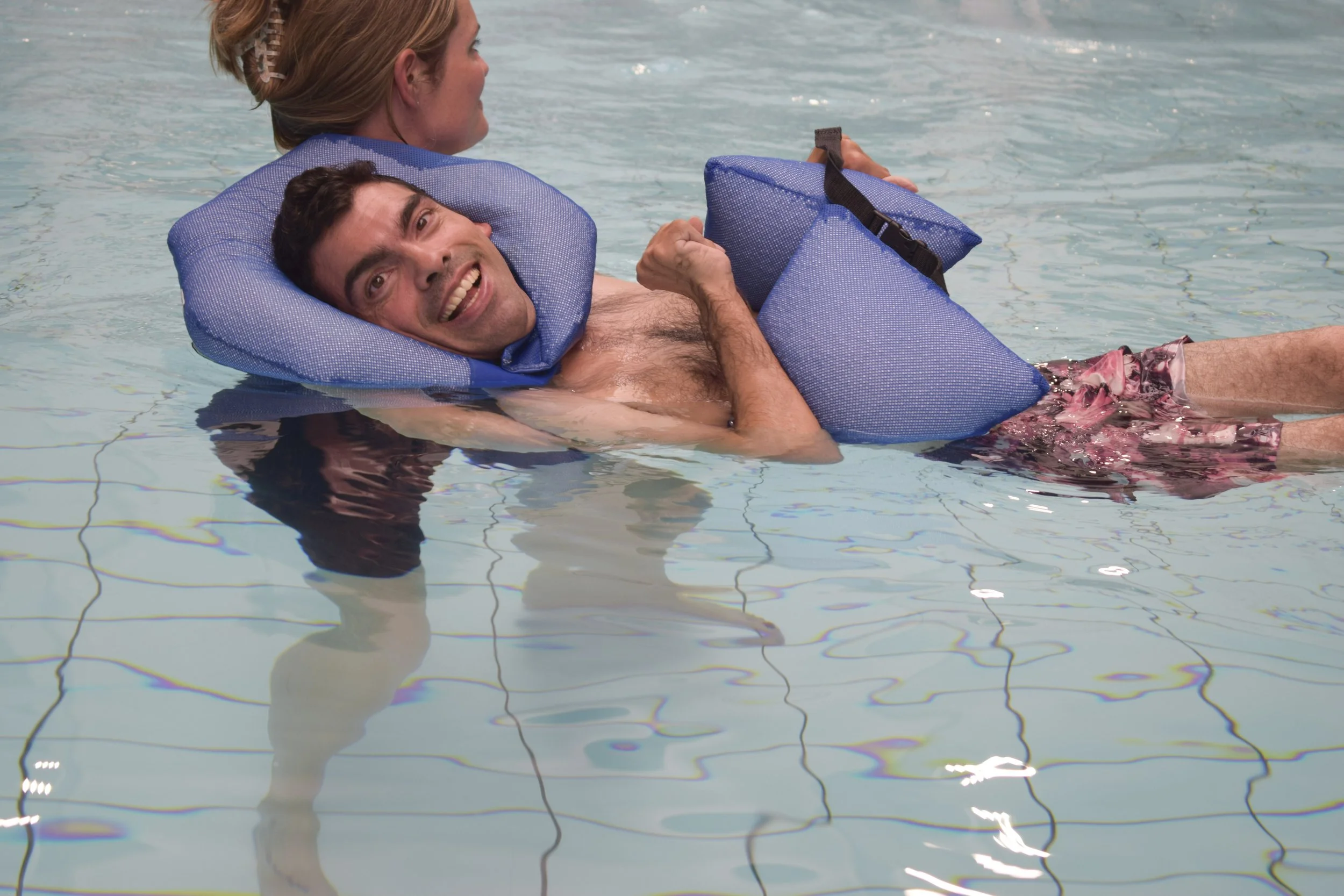
Thinking about safety
Having a diagnosis of cerebral palsy does not mean you need someone to check your safety.
But it is a good idea to check exercise safety when there are other conditions or considerations like…
Medical conditions like epilepsy and osteoporosis.
Any medical conditions that are not stable
Pool exercise when swallowing is affected
How you communicate in the exercise setting
Any sensory or behaviour considerations.
These do not mean that you cannot exercise.
There might be adaptations that can help to make it safe for you.
How our team managed safety concerns
Swallowing or aspiration risk
For Nick, a speech therapist provided an assessment of his swallowing and discussed the risks of going in the pool. This helped with planning the equipment he needed to keep his head and neck out of the water, and the skills of the support worker he would need for pool exercise.
Transfers and mobility
For Lisa, understanding what sort of transfers might be required in the gym was important to working out how many support people she would need to safely move around the space.
For those doing pool exercise, it was important to know what equipment and supports would be needed to be safe both in and out of the pool, including in the change rooms.
Communication
For Yatish, who usually uses a communication device and manual signs, it was important for him to work out how he could communicate when he was in the water
Seizures
For someone with a history of epilepsy, checking with the GP or neurologist about getting in the warm water pool was important because they had not done it before and were not sure how their body would respond. They wanted to know if it was safe to go in, and what they needed to plan for.
Safety strategies: Spotlight on the research
Research shows that it can be safe for adults with high support needs to exercise.
Some of the strategies used in the research studies were:
-
Checking medical safety before starting exercise
-
Having a few sessions to get used to the program or facility
-
Specialty disability equipment or standard equipment used in an adpated way
-
Having someone close by to support as needed
-
Hands on support to access the activity or to do the exercise
-
Checking heart rate, breathing or blood pressure.
-
Supporting the understanding of the young adult or carers about the exercise program
-
Checking in about the effect of exercise on fatigue
These strategies may assist adults with high support needs, and clinicians, to support safe community based physical activity.

Setting up the program
Most people worked with a health professional to set up their program at the beginning.
They felt this was important to making sure it was safe and that it would be effective.
“The physiotherapist suggested it to me and then she's the one who who got all the information for me and the program, so she helped me with the process as well.”
-Angelica’s Mother
Sometimes, if an activity was just for social or enjoyment reasons, then adults did not feel that a health professional was needed - like Michael attending a dance and sing class.
Physiotherapists and exercise physiologists were usually the ones helping with setting up the programs.
Some of the ways they helped were:
Going to look at the facility to check the accessibility of the equipment and space
Working out the safest way to transfer and move around in the space
Working out what exercises to put on a program
Working out how to adapt equipment
Recommending specialty equipment for safety or for the program (for example specialty pool floats)
Training adults on the exercise program and support workers on how to support the program.

Keeping it all going
Checking in
A lot of work goes into making the plan and making it happen.
Sometimes the long term planning for checking in on the program can be forgotten.
Our team want you to know that it is just as important that things get checked and changed regularly - but sometimes this doesn’t automatically happen.
Because of high support needs, it was important to our team that a physiotherapist or exercise physiologist was involved with changing the program.
“It's just been continuing the same. I'd like it to change.”
-Yatish
“The physio comes every 6 months and then hands over the program side of things to the support workers.”
-Angelica
“They don’t monitor my progress and keep a running record. I would like more effort in charting progress and provide realistic feed-back.”
-Lisa


